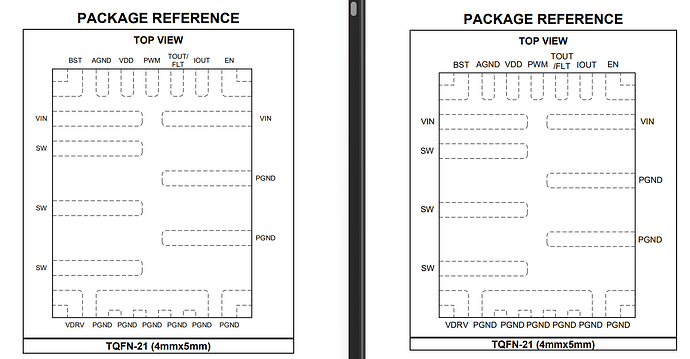Hi MPS team,
We are currently using MPQ86760GVTE-AEC1 in a project, but due to severe supply issues and tight project timelines, we are considering switching to MPQ86940GVTE-AEC1, which appears to be more readily available in the market.
From the available datasheets, we noticed that:
- Both devices share the same TQFN-21 (4mm x 5mm) package
- The only explicitly stated difference is that MPQ86760 supports up to 45A output current, while MPQ86940 supports up to 40A
However, we also found that the MPQ86940GVTE-AEC1 datasheet is only 3 pages, while the MPQ86760GVTE-AEC1 datasheet is 15 pages, making it hard to do a comprehensive comparison.
Could you please confirm:
- Whether MPQ86940GVTE-AEC1 can be a direct drop-in replacement for MPQ86760GVTE-AEC1?
- Are there any other functional, electrical, or pinout differences besides the output current?
- Is a full datasheet for MPQ86940GVTE-AEC1 available?
Thanks in advance for your support.
Hello, welcome to the MPS Forums!
I can answer your questions in the order asked:
-
Comparing these two package pinouts side by side, it appears that the MPQ86940 and the MPQ86760 would be drop in replacements of each other.
-
Here are some other differences that I could find between the two devices other than the current capabilities:
- The MPQ86760 is ISO 26262 compliant and is MPSafe rated as opposed to the MPQ86940. Here’s an article with more info on that to extrapolate on this difference: A Brief Primer on MPSafeTM, MPS’s Process to Functional Safety Automotive Development
- The MPQ86940 utilizes Quiet Switcher technology, which utilizes a unique monolithic structure to suppress voltage stress and enables high frequency operation by minimizing noise and spikes.
- The MPQ86940 has a fault flag with current-limit protection while the MPQ86760.
- Please submit a ticket to the following link for a request like this and ask about a more detailed datasheet for this IC for your evaluation: Contact MPS - Contact
Once you see these datasheets, I am sure there will be even more minute differences in some of the voltages and currents for some of the pins. but since the pinout is the same these differences will certainly be minimal.
Hope this provided some insight.
Best,
Krishan
